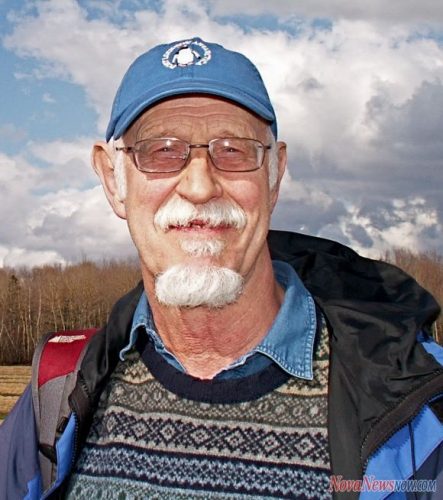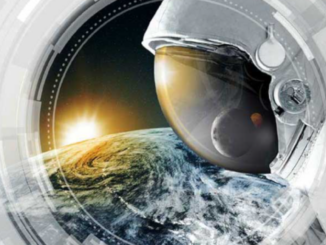This month (October) Digital Earth 2015 (DE2015) was held in Halifax.
There were a number of keynote presentations, including those by Michael Goodchild (Keeping the Dream Alive ) and Lynn Moorman and James Boxall. (Digital Earth for the Next Generation). Goodchild addressed the history of the concept, some of the technical challenges and the issues that remain. Moorman and Boxall express concern that ‘the next generation of users must be geoliterate’. Their proposal is ‘ a concerted focus and collaborative approach akin to the Moon Shot of the 1960’s’.
Moorman and Boxall see the geoliteracy requirement for k-12 level being met through national and international collaboration, including the Canadian GeoAlliance which can provide a united voice for the geospatial sector.
From my perspective, Digital Earth offers a top down, hierarchy of scale for the Earth’s physical features: Digital Earth (global) – Digital North America (continent) – Digital Great Lakes (watershed). Or instead of physiographic units, we can apply administrative boundaries: Digital Earth – Digital Canada – Digital Nova Scotia – Digital Annapolis County. Colin MacDonald at DE2015 offered a vision for Digital Nova Scotia (Delivering a modern geomatics program in the public sector, and Building a spatial data infrastructure in the Province of Nova Scotia)
Within the same time frame as DE2015, I have received the link to a new web atlas of Mi’kmaq place names (http://mikmawplacenames.ca). This is the work of Bernie Francis and Trudy Sable with Geomatics support from Bill Jones. In addition, Brian Arnott was also kind enough to forward to me a draft of his new book, ‘ Learning Lunenburg: 100 ways of being in a small community’. It identifies one hundred specific qualities for the town of Lunenburg and will be published in December.
To my way of thinking, both the atlas and the book are resources which can be used to support ‘place-based education’ at the local level. This is a ‘bottom up’ approach which may complement the ‘top down, moon shot’ strategy, proposed by Moorman and Boxall.
If you are interested in ‘acting locally’, I would recommend a collection of papers edited by David Gruenewald and Gregory Smith, ‘Place-based Education in the Global Age’. From the Introduction, p. xxi
“An education in place must also acquaint students with the way that their own health and security are codependent on the health and security of everyone and everything around them. This knowledge of interdependence must have emerged over time through painful experiences for our predecessors and remains embedded in the language and culture of Native peoples on all continents. Knowledge of interdependence, now reemerging in societies across the globe, must come to inform all human decisions if people currently alive hope to pass down to their offspring places worthy of inhabitation. Interdependence is not an abstract idea but a lived experience of all people in all places, best understood through the study of the commons that we share with human and nonhuman others. Bowers (2005) describes the commons as those relationships and systems that contribute to the well-being of a community and that have not been commodified by the capitalist-industrial system. These include natural systems such as air, water, and forests; cultural systems such as public spaces and legal protections that keep them public; and civic associations found in mentoring and intergenerational relationships. Through an education in place that connects teachers and learners to the life of the wider community, these ecological and cultural commons must be identified, conserved, and restored.”
This lengthy quotation returns us to the expression ‘think global, act local’. Place-based education is the epitome of geography education. Through big ideas like ‘digital earth’ we are seeing an increased availability of high quality imagery and digital base maps however to change the local conditions on the ground will require this sense of interdependence, and active engagement at the community level.
References:
Digital Earth 2015 Final Agenda still available at digitalearth2015.ca<http://digitalearth2015.ca> plus pdf of all presentation abstracts.
Goodchild, M. 2015. Keeping the Dream Alive. See digitalearth2015.ca<http://digitalearth2015.ca> for the Abstract.
MacDonald, C. 2015. Building a spatial data infrastructure in the Province of Nova Scotia. See digitalearth2015.ca<http://digitalearth2015.ca> for the Abstract.
MacDonald, C. 2015. delivering a modern Geomatics program in the public sector. See digitalearth2015.ca<http://digitalearth2015.ca> for the Abstract.
Moorman, L. and J. Boxall. 2015 Digital Earth for the Next Generation. See digitalearth2015.ca<http://digitalearth2015.ca> for the Abstract.
Mi’kmaq atlas. See http://mikmawplacenames.ca
Arnott, Brian. 2015. Learning Lunenburg: 100 ways of being in a small community. McIntyre and Purcell Publishers. Lunenburg, NS.
Gruenewald, D.A. and G.A. Smith (ed.) 2008. Place-based Education in the Global Age. Lawrence Erlbaum Associates.
Bowers, C.A. 2005. Revitalizing the commons; cultural and educational sites of resistance and affirmation. Lexington Books.





Be the first to comment